We try roasted horseshoe crab in Thailand, regret our choice yet strangely long for more
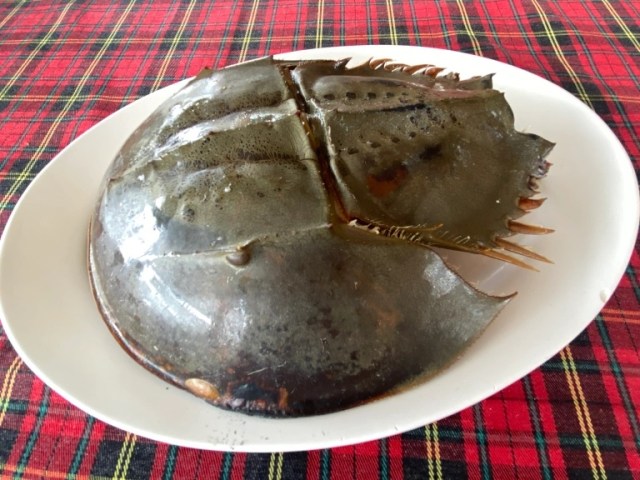
The horseshoe crab’s uniquely coastal taste leaves our reporter unsure whether she hates it or loves it.
Our travel loving reporter Ikuna Kamezawa is currently in Thailand, having recently spent time at a izakaya that served food currently banned in Japan. But having got her fill of Japanese food in Bangkok, she decided to take a trip to somewhere a little more authentically Thai. So a propeller plane, bus and boat ride later, she found herself in Koh Chang, which translates to “Elephant Island” and gets its name because it’s shaped like an elephant’s head.
▼ Koh Chang was a popular tourist spot pre-COVID-19.
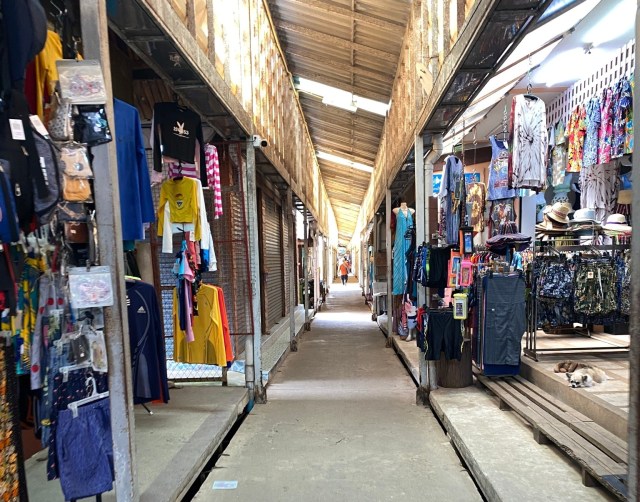
Compared to the hustle and bustle of Bangkok, Koh Chang seemed pretty quiet and peaceful, which is exactly why Ikuna had decided to go there. There weren’t any buses or taxis on the island, so Ikuna decided to rent a motorcycle and go on an adventure to a place on the island that she’d heard was pretty good; a ‘floating village’ about 40 minutes south of the harbour.
The road to the floating village was pretty perilous, especially as Ikuna was on a motorcycle. The route had mostly steep roads, and Ikuna almost ended up rolling back down the slopes several times — that’s how steep they were! But eventually she arrived at the water village, called Bang Bao.
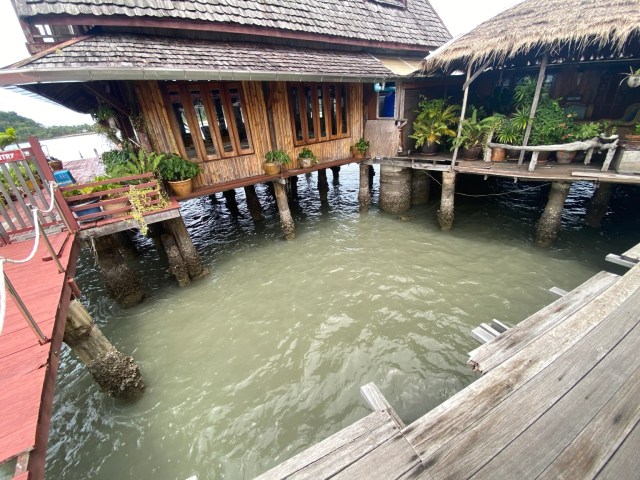
There are a bunch of souvenir stores and dive shops in the village, as well as some houses that are connected by an old looking wooden bridge. Ikuna had heard that this village used to be full of tourists, so much so that it was hard to move about, but with the current travel climate, it took Ikuna less than 30 minutes to walk around the whole quaint and charming village and see everything.
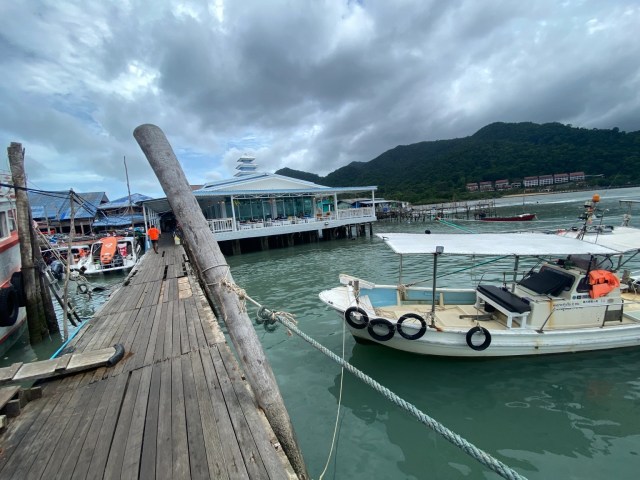
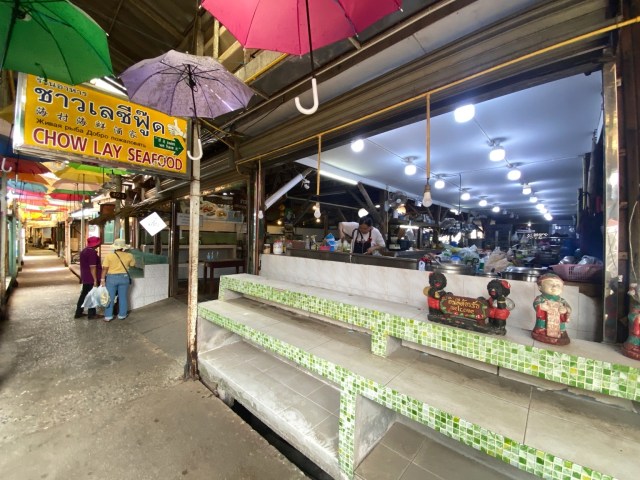
Just as she was ready to ride her motorcycle back down the slopes, though, she spotted an inconspicuous yet intriguing-looking restaurant selling something she’d never even dreamed of eating.
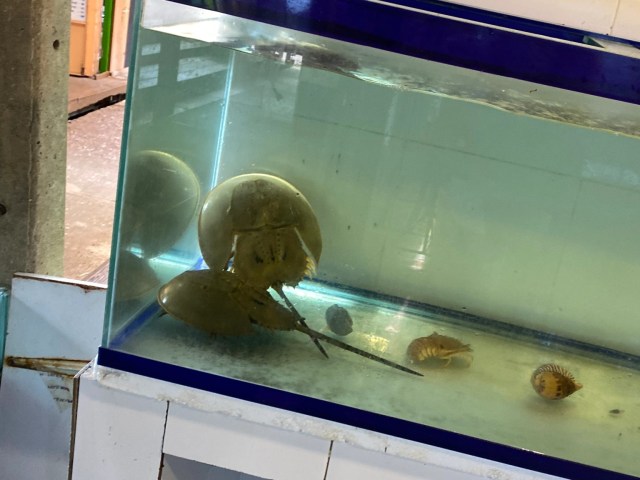
Horseshoe crabs!
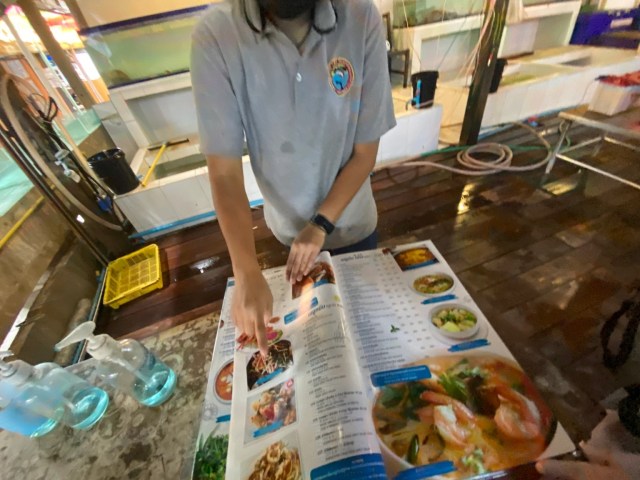
While horseshoe crabs are delicacies in some Asian countries, Japan is not one of them. Ikuna has never seen a single restaurant menu in Japan that has horseshoe crab on it. In fact, she wasn’t entirely convinced that horseshoe crabs were even edible. She’d always thought of them as ‘living fossils’; something to observe and admire, rather than something she’d find on her plate.
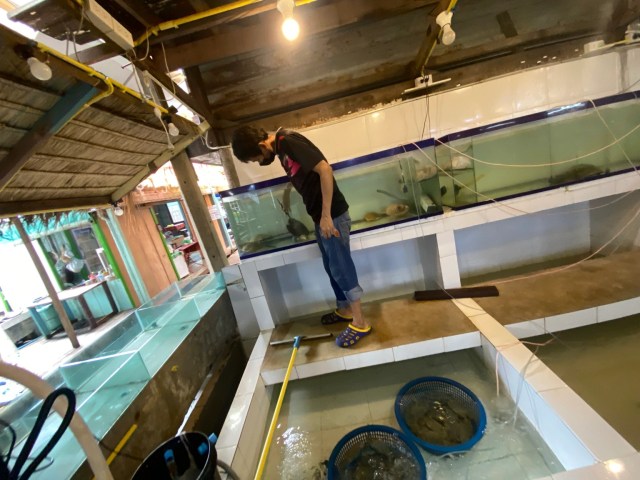
Nevertheless, she ordered a roasted horseshoe crab and waited with excitement.
A horseshoe crab meal cost 800 baht (US$22.14). As this was Ikuna’s first horseshoe crab experience, she wasn’t sure whether that was expensive or not. Either way, seeing as she was in a different country, it only seemed right to treat herself to something she’d not normally encounter in Japan!
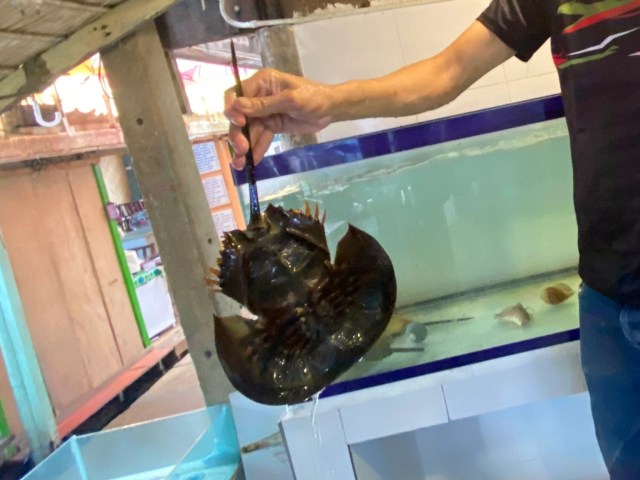
The waiter immediately grabbed the horseshoe crab from the tank with his bare hands. While the crabs look pretty intimidating, the tails aren’t used to sting you; instead, they’re used to right themselves if they get turned upside down.
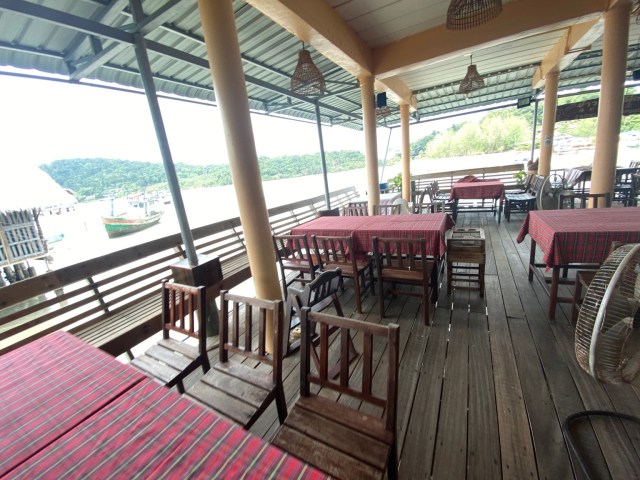
After 15 minutes waiting at the outdoor table, enjoying the sea breeze, Ikuna’s meal arrived.
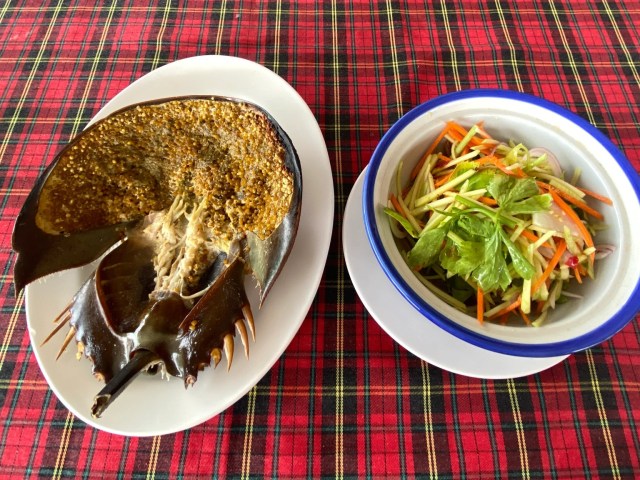
Ta-da! Roasted horseshoe crab, with a side salad! It was completely different to what Ikuna, who, up until now had only experienced regular old crab, had been expecting. She’d been envisioning that the horseshoe crab would be fairly meaty.
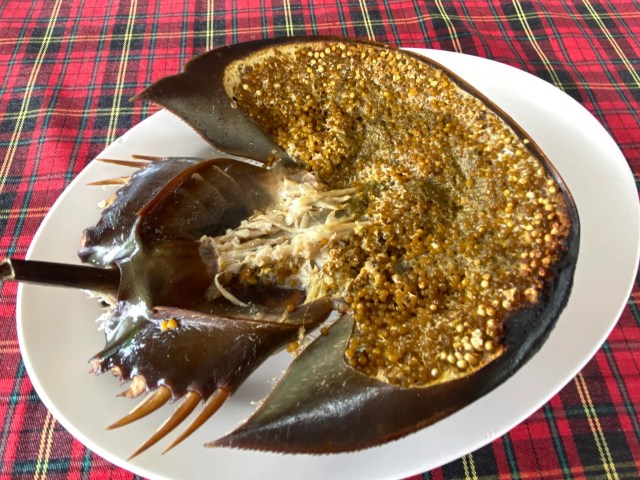
But as she inspected her plate closer, she saw the underbelly of the horseshoe crab was instead covered in knobbly bits. Is this what horseshoe crab meat looks like?

Ikuna asked the waiter, who told her that these were in fact horseshoe crab eggs. Despite the name, horseshoe crabs are actually more closely related to arachnids like spiders. So while actual crabs have lots of meaty flesh to enjoy, horseshoe crabs are mostly eaten for their eggs, or roe.
Ikuna could see a tiny bit of ‘crab-like meat’ on the horseshoe crab, but it was stuck to the shell so tightly that it was pretty inedible. She managed to scrape a bit off to try, but it didn’t taste good. If Ikuna had to describe the taste, it would be “very bad frozen crab cartilage”.
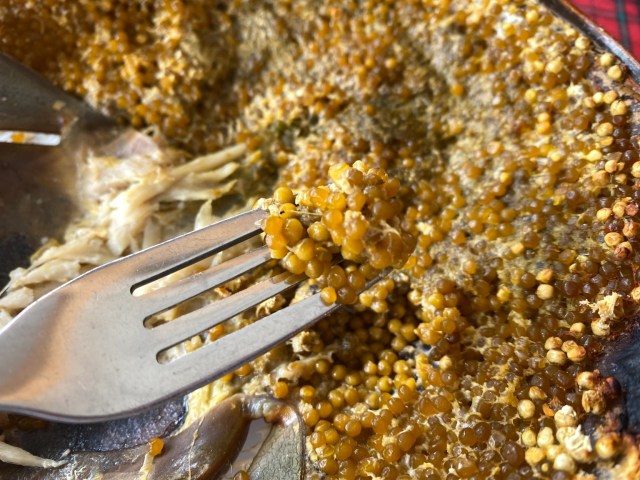
The horseshoe crab roe was very much edible, though, so Ikuna popped some in her mouth…

… and her tastebuds were met with an unusual taste of the coast. In her mouth, waves were crashing against the rocky shore with each bite. Not only that, but the roe had a crunchy texture, too. It felt like Ikuna was eating the centre of a horse mackerel’s eyeball (which she recommends, by the way.)
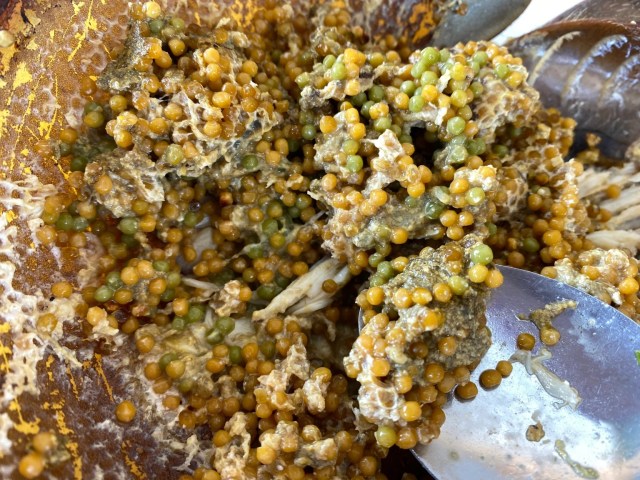
The more she scraped the roe away, a hidden layer of horseshoe crab innards slowly but surely got revealed. They had a strong taste, and with each bite Ikuna felt like she was becoming one with the crab, merging together in some sort of weird unity.
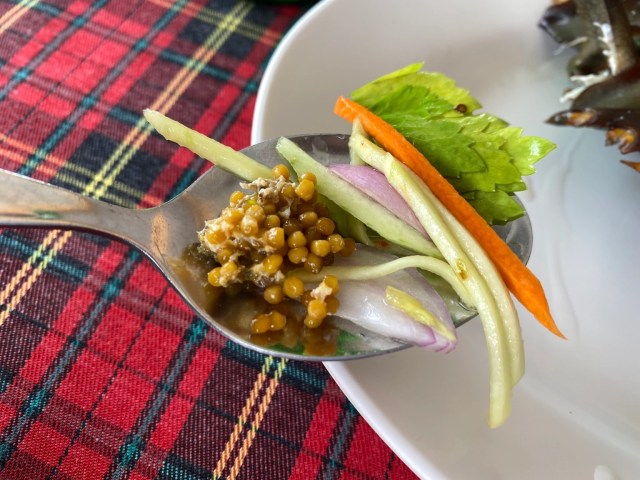
To bring her back to her senses, Ikuna decided to try the salad. At first, she was a little shocked at its surprisingly sharp flavour, but she soon realised the salad was deliberately strong-tasting to help mask the unusual ocean-y smell of the horseshoe crab.
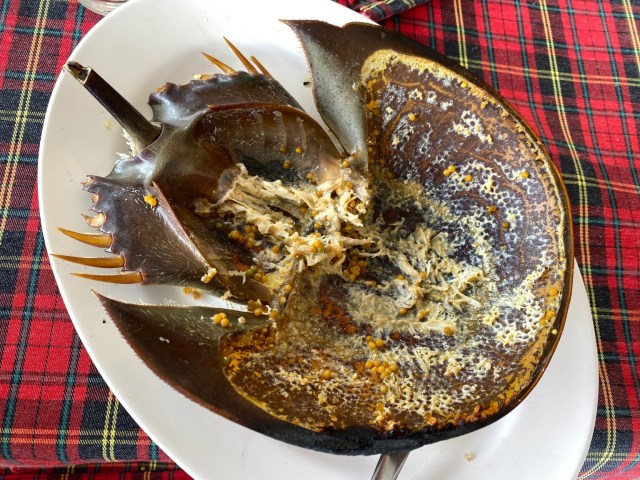
With the help of the salad, Ikuna eventually managed to polish off the entire roasted horseshoe crab. As she put down her fork, she thought to herself, “I’m never eating this again,” but as time passed, she found herself strangely missing the taste of the rocky shore on her tongue.
Horseshoe crab is sold at various spots across Thailand, so if you’re a fan of seafood (or just like the taste of the beach), give it a try. Ikuna recommends sharing a crab with a group of friends rather than eating the whole thing yourself, as it’s a pretty hefty slog. But after eating something like this giant five-and-a-half pound hamburger (also found in Thailand), a measly horseshoe crab should be a walk in the park.
Images: ©SoraNews24
● Want to hear about SoraNews24’s latest articles as soon as they’re published? Follow us on Facebook and Twitter!
Credit:

0 comments: